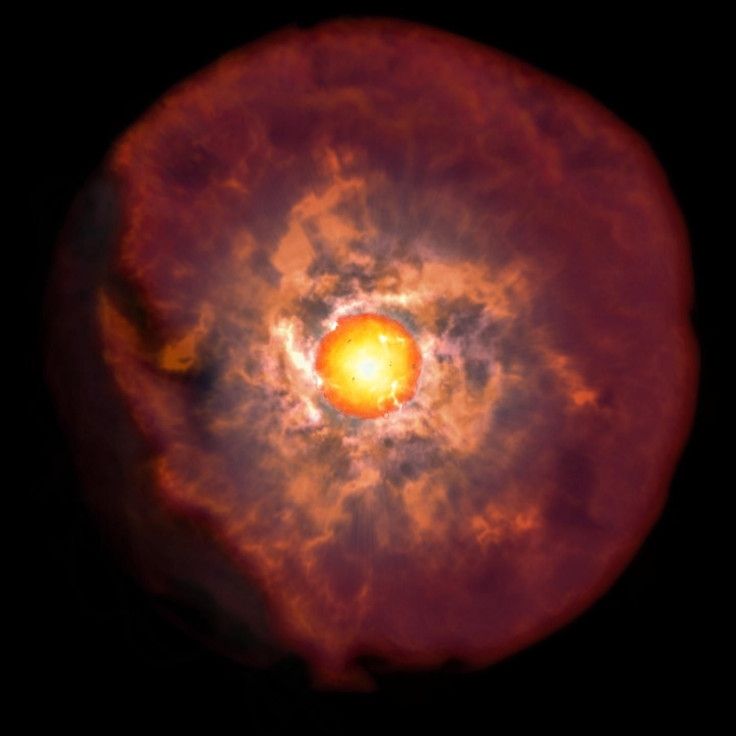Veiled Supernovae: Thick Circumstellar Clouds Hide Shock Breakouts From Dying Stars

When a star reaches the end of its life, it loses all of its nuclear fuel and explodes to form a supernova. The process has long been studied by scientists, but just recently, an international team of astronomers found that the initial flash occurring at the beginning of the death event could often be veiled by a mysterious thick cloud of matter.
"Near the end of its life, some mechanism in the star's interior must cause it to shed mass that then forms a layer around the star,” Takashi Moriya, one of the authors of the work, said in a statement. “We don't yet have a clear idea of the mechanism causing this mass loss.”
Moriya and team, which included scientists from the University of Chile, Millennium Institute of Astrophysics (MAS) and National Astronomical Observatory of Japan, detected the presence and effect of this veil after looking at as many as 26 different supernovae cases.
They employed DECam instrument positioned on the 4-m Victor Blanco Telescope at the Aura Observatory in Chile and observed different patches of the sky for six nights in 2014 and eight nights the next year.
During the observation, they witnessed supernovae from different red supergiant stars — extremely big stellar bodies in final stages of their lives— in hopes of studying their shock breakouts or the initial flash that occurs before the main stellar explosion.
However, they didn’t note any signs of the phenomenon. Instead, 24 of the observed supernovae kept growing brighter, much faster than what scientists had expected. The observational data was completely different from what the team had expected, which led them to run a series of computer simulations.
Moriya developed as many as 518 different models of supernovae brightness variations and compared them with the observational data. The work found that a thick cloud of circumstellar matter shed by the star, carrying nearly 10 percent of the sun’s mass, best explains the lack of initial flash and the sudden increase in brightness seen in the data.
Essentially, the layer of matter ejected by the red supergiant shrouds the star completely. The veil formed by this material is too thick to allow any light from the shock breakout to pass. However, when the expanding gas and other ejecta from the supernova collides with the circumstellar veil, a much stronger shockwave is produced leading to a rapid increase in brightness.
"The presence of this material makes it possible to extract part of the enormous energy produced during the explosion and turn it into light that we can detect," Francisco Förster, the lead researcher behind the work, said in another statement.
That said, the team believes further observational data from upcoming advanced telescopes could play a major part in shedding more light into the thick veil circumstellar matter and the processes behind its formation.
“Further study is needed to get a better understanding of the mass loss mechanism,” Moriya concluded. “This will also be important in revealing the supernova explosion mechanism and the origin of the diversity in supernovae."
The study titled “The delay of shock breakout due to circumstellar material evident in most type II supernovae” was published Sept. 3 in the journal Nature Astronomy.
© Copyright IBTimes 2025. All rights reserved.





















